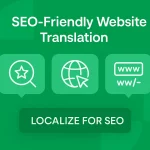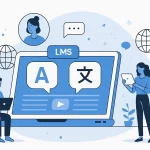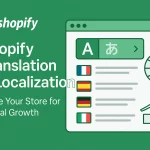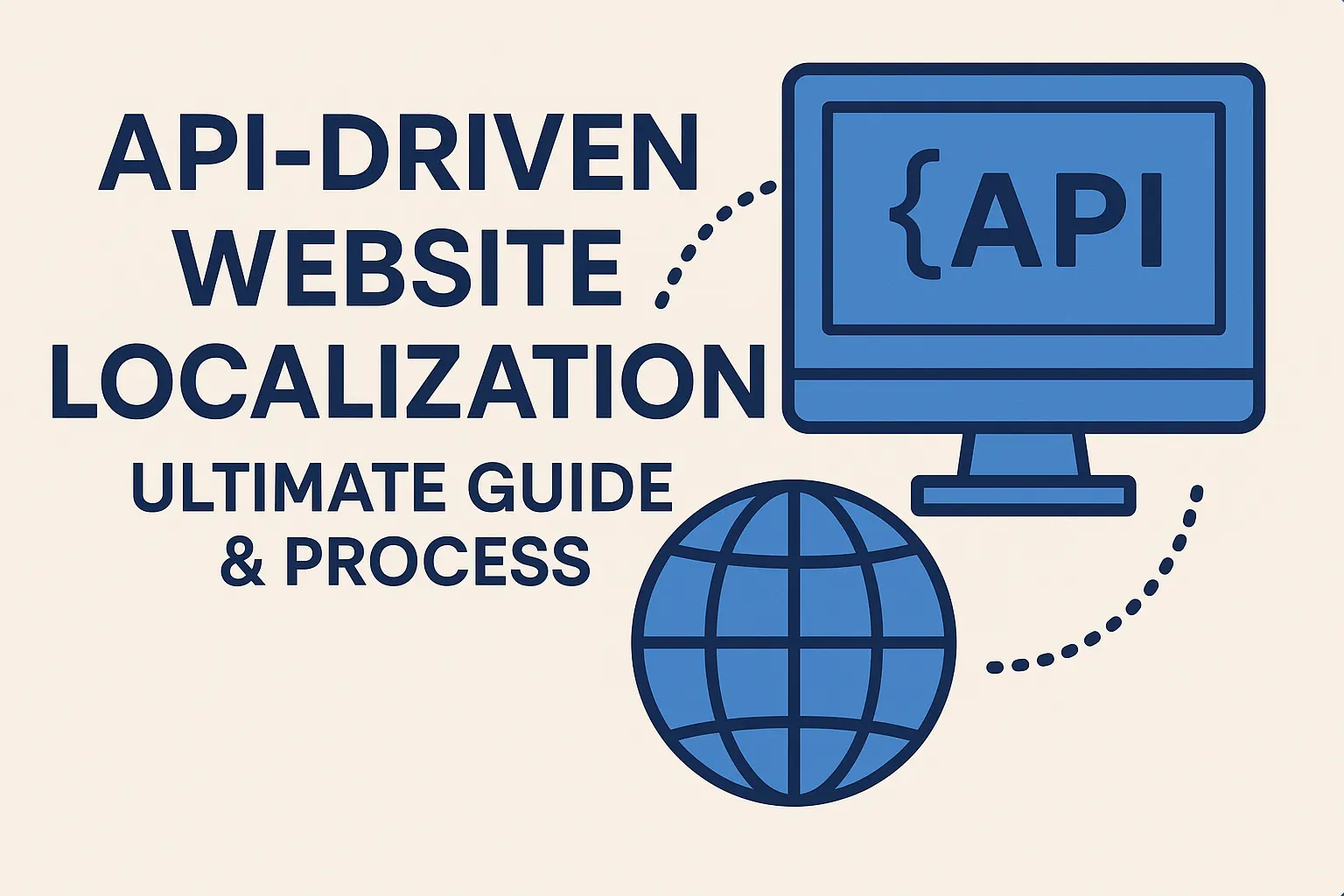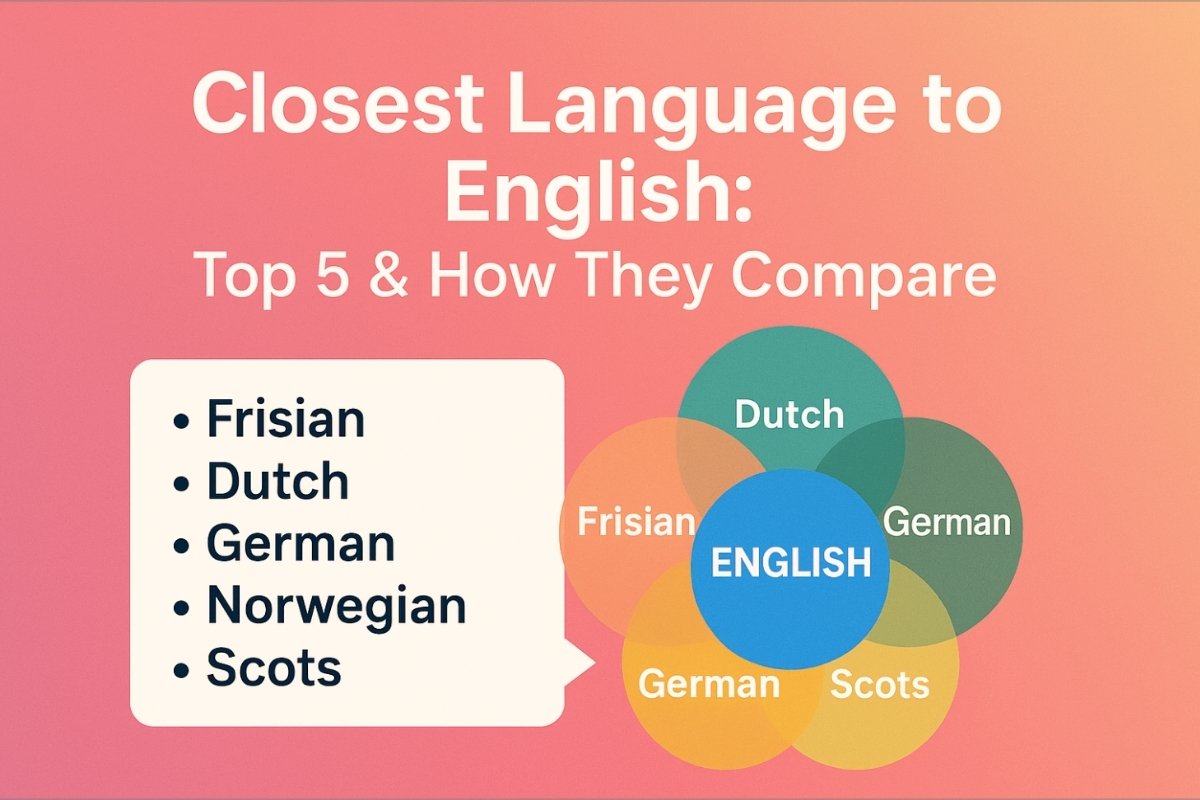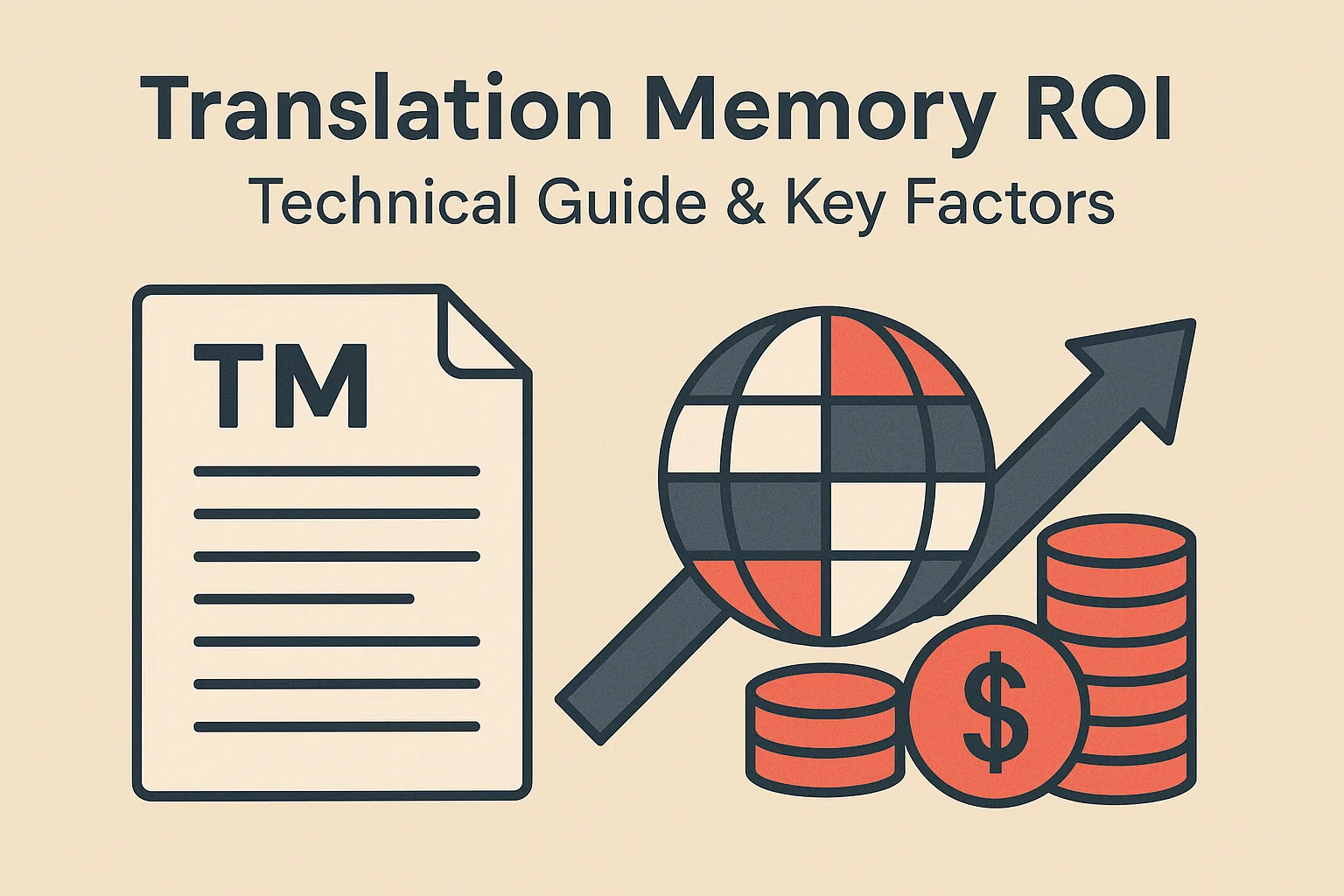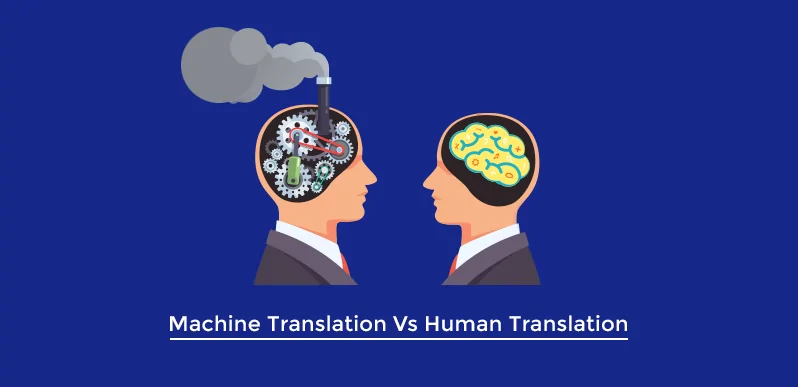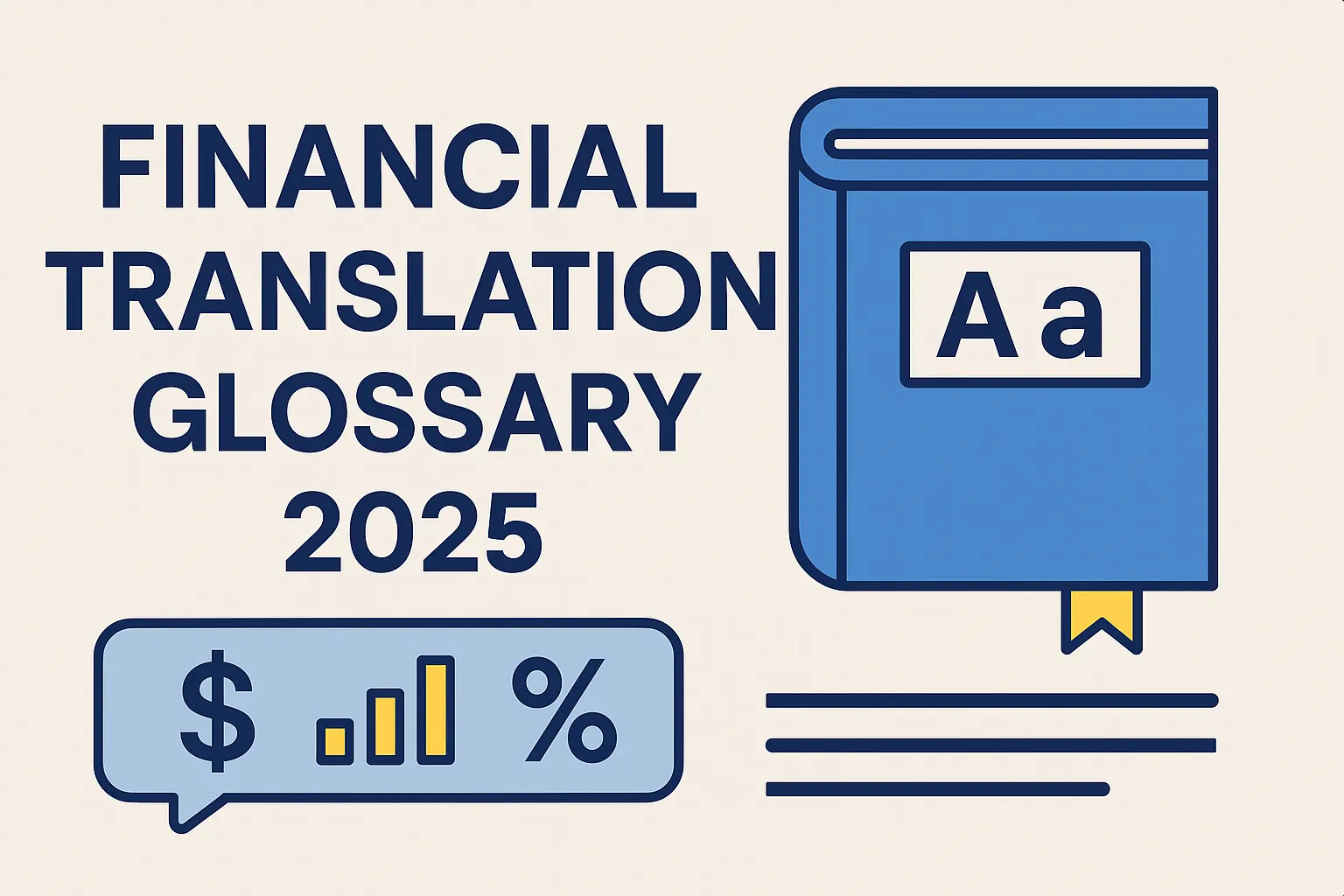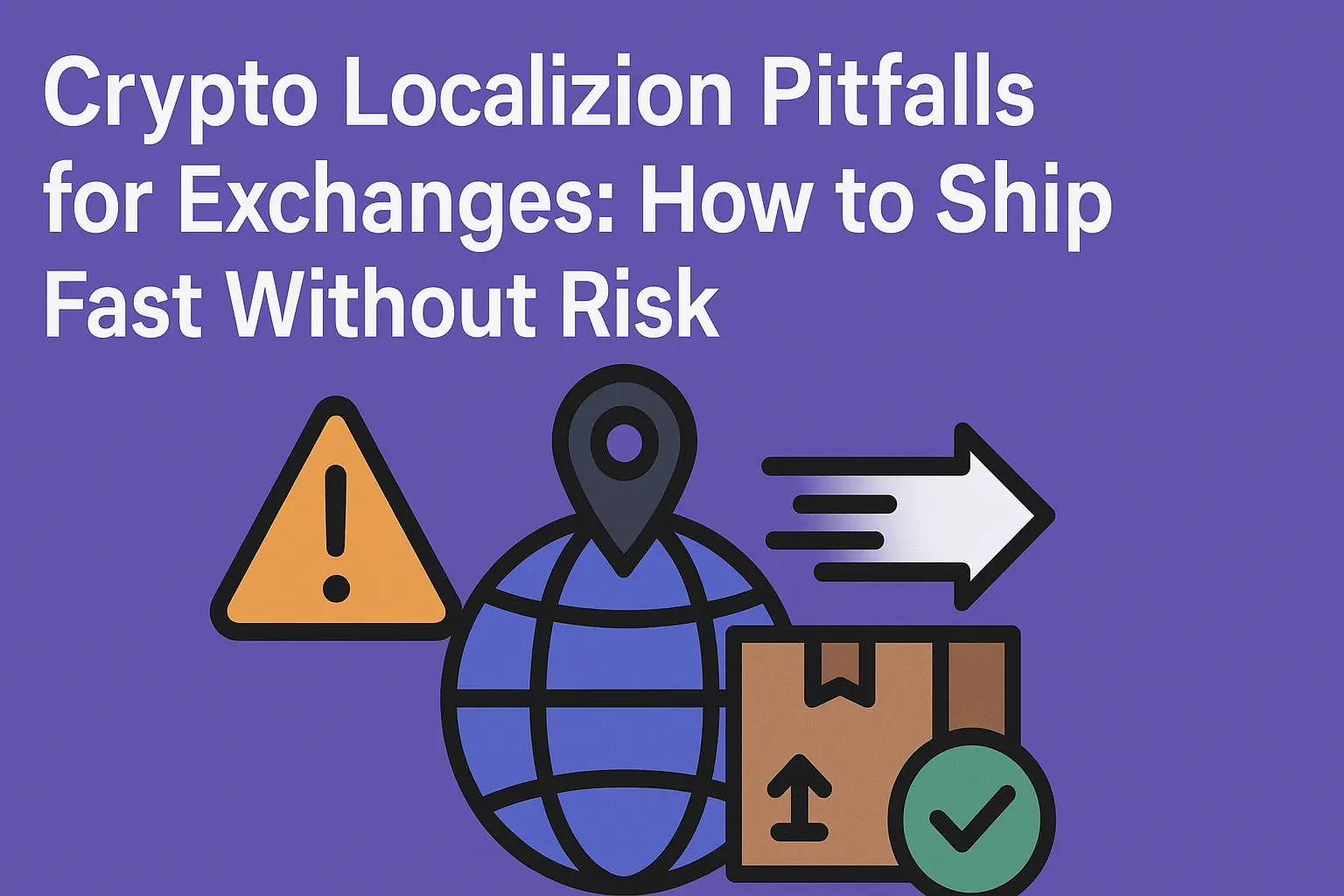The ability to deliver multilingual releases in sync with your website updates has a direct impact on market share, compliance, and customer trust.
Localization should be built into every stage of production, and manual integration cannot delay the process.
API-driven website localization is the modern answer.
Instead of manually uploading and downloading files, this method connects your website, CMS, or design system directly to a Translation Management System (TMS) using REST/GraphQL APIs and webhooks. This ensures content is translated, reviewed, and deployed continuously, often cutting release cycles from weeks to days.
This guide explores deep into the processes of API-driven website localization, why it matters, and how you should approach this effectively in 2025.
What is API-driven website localization?
API-driven localization means automating the exchange of translatable strings between your site and a TMS through structured APIs.
Strings are pushed and pulled automatically, eliminating the bottlenecks of manual file drops.
This not only reduces risks, such as delay, version mismatch, and copy/paste errors, but also improves the workflow with continuous updates, traceability, and measurable SLAs
Key concepts:
- TMS/CAT:
Core translation environments that store translation memories (TM) and glossaries
- Webhooks:
Real-time triggers for translation jobs on commit/deploy
- CI/CD:
Continuous integration/delivery workflows that ensure localization keeps pace with dev
- String catalogs:
Structured resource files (JSON, YAML, XLIFF) for clean and trackable updates
API vs proxy vs JS snippet vs CMS plugin: which model fits?
Different localization models exist – APIs, proxies, snippets, or plugins. Each has strengths and trade-offs.
To pick one over the others can be a daunting task. So, here’s a table summary of the different models, highlighting the best and worst qualities of each model, to help you cut through the noise:
| Model | Pros | Cons |
| API / Connector
(Recommended) |
|
|
| Proxy Model |
|
|
| Client-Side JS Snippet |
|
|
| CMS Plugin |
|
|
[Tip: For enterprises with multi-team, regulated, or SEO-sensitive websites, API-driven connectors are the only sustainable choice.]
When should you choose an API-driven approach?
API-driven localization is ideal for organizations that need speed, scale, and precision in managing multilingual content.
API-driven localization is non-negotiable if your platform has:
- High string churn (UI/marketing copy updated daily/weekly)
- Multiple teams releasing in parallel
- Complex CMS/DXP with structured content
- Governance needs (legal/brand reviews, audit logs)
- Integrations with Git, CI/CD, or DAM
- SEO-critical global reach
At Circle Translations, we help businesses implement API-driven localization workflows that keep pace with rapid content updates. Our approach ensures seamless integration with your CMS, DAM, or CI/CD pipelines, maintaining governance and compliance while reducing errors.
With our solution, multilingual content is translated, reviewed, and deployed continuously, accelerating time-to-market and ensuring your global audiences always receive up-to-date, SEO-friendly content.
End-to-end process (API flow)
Managing multilingual content can be complex, especially when updates are frequent and multiple teams are involved. API-driven localization streamlines the entire process from extraction to deployment.
With a continuous, automated loop, your content is translated, reviewed, and published without bottlenecks, ensuring consistency across all markets while maintaining quality and timeline integrity.
Here’s what a typical API Localization Lifecycle Flow looks like:
Swimlanes:
- Dev team: String extraction, i18n compliance, API calls
- TMS: Pre-translation, version control, QA logging
- Linguists: Review, terminology governance
- QA/PM: LQA, reconciliation, approval
- Ops: Delivery → deployment, cache/CDN refresh
This approach ensures continuous localization, reduces errors, and accelerates time-to-market for your multilingual content, keeping your teams aligned and your global audience engaged at the same time.
Let’s look at the steps a little closer:
Step 1 — Prep & i18n: string extraction and writing for localization
- Extract strings in JSON, YAML, XLIFF
- Use ICU MessageFormat for pluralization and variants
- Avoid hard-coded strings and concatenation
- Build for RTL readiness and Unicode compliance
Step 2 — CI/CD automation: webhooks & jobs
- Trigger jobs on merge or deploy
- Use status webhooks to confirm the translation stage
- Account for rate limits and retries with exponential backoff
- Ensure idempotency for duplicate webhook events
- Track API versioning to avoid breaking changes
Step 3 — Translation workflow (TM/termbase/MTPE → human)
- Pre-translation: leverage TM & glossary
- Optional MTPE: for non-critical content
- Human editing: domain SMEs ensure accuracy
- Governance: glossary, ownership, reconciliation logs
Align with tiers:
- Basic: TM leverage + MTPE
- Business/Pro: SME review + LQA
- Custom: Legal/regulated docs, full audit trail
Step 4 — LQA & localization testing
- Pseudo-localization: expand text, test encoding/layout
- In-context review: screenshots, staging builds
- Testing mix: manual + automated (string coverage, UI automation)
- Frameworks: MQM/DQF scoring, defect logs, fix loops
Step 5 — Delivery & deployment
- Pull translated files via API with validation checks
- Smoke test locales before release
- Refresh CDN/cache layers
- Always maintain a rollback strategy
SEO for localized sites (the non-negotiables)
SEO can make or break a localization project.
Even the best translations may fail to drive traffic if your site isn’t optimized for search engines in each target market.
To ensure your multilingual content reaches the right audience, implementing these practices is a must:
- Hreflang tags or sitemaps: Ensure search engines index and serve the correct language version to the right audience.
- Localized URLs: Use subfolders (e.g., domain.com/fr/) or subdomains instead of query parameters for better crawlability and SEO value.
- x-default annotations: Define a global entry point for users whose language doesn’t match your localized versions.
- Language switch UX: Make language selection visible, intuitive, and user-friendly. Avoid forced redirects that confuse users and search engines.
- Sitemap annotations: Maintain reciprocal links between localized pages to reinforce proper indexing.
Hreflang Implementation Patterns (HTML vs. Sitemaps)
Proper hreflang implementation ensures search engines correctly index your localized pages. Common approaches include:
- HTML <link> tags: Granular control, but requires development resources.
- XML sitemaps: Easier to maintain for large sites; ensure all links are reciprocal.
Errors to avoid: Missing reciprocal tags, incorrect regional codes.
URL Structures and IDN/IRI
Optimized URL structures improve SEO and user experience. Options include:
- Subfolders (preferred): domain.com/de/
- Subdomains: de.domain.com
- ccTLDs: domain.de (brand-focused but splits domain authority)
- IDN/IRI: Allows non-ASCII paths (e.g., 汉字.com/产品); check redirects and canonicalization carefully.
Avoid Auto-Redirecting Users by IP/Language
- Crawlers may miss localized pages.
- Users may get stuck in the wrong locale.
- Best practice: Use a non-intrusive language switcher (banner or modal) and set interstitials to noindex.
At Circle Translations, we ensure your localized sites are fully SEO-ready. From correctly implementing hreflang tags and localized URLs to managing reciprocal sitemap annotations, our API-driven workflows integrate SEO best practices directly into the localization process.
This way, your multilingual content not only reads well but also ranks well in search engines across every target market.
Architecture & security
For highly regulated industries such as finance, law, or healthcare, API-driven localization must meet strict security, and audit requirements.
Best practices include:
- OAuth2 / PAT authentication: Ensures only authorized users and systems access your localization endpoints.
- IP allowlisting: Restricts API access to trusted networks for added security.
- Encryption in transit and at rest: Protects sensitive data throughout the workflow.
- Audit logs: Track all edits and access to maintain compliance and transparency.
- PII minimization: Avoid storing personally identifiable information in string catalogs.
Let’s look a little deeper:
Auth, rate limits, and retries
In any API-driven localization workflow, secure and reliable communication between systems is critical.
Proper authentication ensures only authorized users and systems can access your content, preventing errors from disrupting your translation pipeline.
- OAuth2 with refresh tokens or PATs: Secure API access while enabling long-lived sessions.
- Handle 429 / 5xx errors with exponential backoff: Ensure your system gracefully recovers from rate limits or temporary server errors.
- Idempotent endpoints: Make retries safe by replaying requests won’t create duplicate data or unintended side effects.
Data formats, placeholders, and variants
Managing multilingual content requires consistent data structures and clear guidelines for linguists.
Using standardized formats and maintaining placeholders ensures translations are accurate, context-aware, and compatible with your application.
Here are a few must-haves:
- JSON, YAML, XLIFF, supported by most APIs
- ICU MessageFormat: pluralization, gender rules
- Placeholders: must remain intact, not translated
- Provide sample files + screenshots for linguists
At Circle Translations, we manage localization projects under ISO 17100 and MQM/DQF frameworks, combined with SOC2-ready controls, ensuring that clients in regulated markets can safely scale multilingual content without compromising security or compliance.
Timeline & cost factors
Localization projects can vary widely, from word count and DTP requirements to the complexity of the review and integration process. Consequently, pricing also differs based on the scope of the project.
Pricing tiers could look like:
- Basic: from €0.05/word (MTPE + TM leverage)
- Business: €0.08–0.13 (SME editing, 1 revision)
- Pro: €0.10–0.16 (LQA + 2 revisions)
- Custom: enterprise workflows, regulated docs
Sizing & SLAs (typical release train)
Localization projects are often structured like a release train, with predictable cycles and checkpoints to ensure quality and timely delivery:
- 5–10k strings: Typically completed in 1–2 sprints, including full LQA.
- Rush path: For urgent releases, multiple linguists work in parallel with additional project management oversight to maintain quality while accelerating timelines.
- SLA checkpoints: Key milestones include translation completion, linguistic QA, and final deployment to the live site.
This structured approach ensures that even complex, multilingual updates remain on schedule without compromising accuracy or consistency.
RFP checklist for API-driven localization vendors
When selecting a localization vendor, a structured evaluation is a must to find the right technical and quality requirements.
Key criteria to consider include:
- ISO 17100 certification
- LQA model (MQM/DQF)
- Glossary/TM ownership policy
- CMS/Git/CI connectors
- SLA metrics & penalties
- Security questionnaire responses
- Sample QA report
- References/case studies
- Edge cases: RTL, pluralization, ICU support
Why Choose Circle Translations for API-Driven Website Localization
Circle Translations delivers enterprise-grade API-driven localization with native linguists across 120+ languages, ISO-aligned QA, and 24/7 project support synced to global release cycles. Our secure, audit-ready workflows embed glossaries, QA, and governance directly into your CI/CD pipeline, ensuring scalable, SEO-safe multilingual websites with consistent branding.
What Sets Us Apart in API-Driven Website Localization
Native linguists with technical depth
Our translators are subject-matter experts in software, e-commerce, and finance. They work in 120+ languages and understand resource files (JSON, YAML, PO, XLIFF), placeholders, and ICU MessageFormat; so your strings stay functional as well as accurate.
Automation without losing control
We support REST/GraphQL APIs, webhooks, and CMS/Git connectors that slot into your CI/CD pipeline. You get the speed of continuous localization with governance safeguards: glossary enforcement, MQM/DQF scoring, and second-linguist review where required.
24/7 project management & SLA tracking
Our global PM team provides around-the-clock coverage, ensuring webhook triggers, deliveries, and revisions are resolved in real time. For enterprise release trains, this keeps deployments predictable and SLA commitments visible.
Security & compliance built-in
Encrypted file transfers, NDA-backed linguists, and SOC/GDPR-style compliance reporting give you procurement peace of mind. For finance, healthcare, or legal teams, we can provide audit trails on request.
Flexible service tiers
Whether you’re piloting localization in a single market or rolling out to 30+ languages, our Basic, Business, Pro, and Custom tiers balance budget, automation depth, and review rigor.
How We Deliver ROI Beyond Cost
- Faster launches: API automation eliminates manual file drops.
- Consistent brand voice: Termbases and style guides scale with every release.
- Lower engineering load: String validation, pseudo-localization, and QA loops reduce developer rework.
- Procurement clarity: Transparent match-band reporting shows exactly where savings and cycle-time gains come from.
Circle Translations is more than a vendor. We’re your localization efficiency partner, making sure your API-driven workflows deliver speed, quality, and measurable returns across every release cycle.
Sum Up
For global enterprises, API-driven website localization is essential for delivering fast, consistent, and high-quality multilingual experiences. By integrating APIs, webhooks, and CI/CD pipelines, organizations create continuous localization workflows that keep content accurate and up-to-date across all languages and markets.
Automated localization enables teams to focus on strategy, brand messaging, and market expansion rather than repetitive content management. This approach drives measurable results: reducing time-to-market by up to 40%, ensuring regulatory compliance and auditability, growth, and eliminating costly mistakes.
At Circle Translations, we specialize in enterprise-grade API localization solutions. Our workflows combine native linguists, ISO-aligned QA, and secure, audit-ready processes directly into your CI/CD cycle. The result is a scalable, SEO-friendly multilingual website that delivers consistent messaging, faster releases, and seamless global reach.
Frequently Asked Questions
How is API-driven localization different from a proxy or plugin?
API/connector models integrate with CI/CD, offer governance, and support granular QA. Proxies are fast to pilot but weak for dynamic UIs; client-side swaps can harm SEO.
What’s the best way to implement hreflang at scale?
Either HTML <link> tags or XML sitemaps with reciprocal references. Add x-default. Avoid missing reciprocals or wrong codes.
Which file formats work best with APIs?
JSON, YAML, XLIFF, PO. Use ICU MessageFormat for placeholders. Keep keys stable across versions.
How do we test localized builds efficiently?
Start with pseudo-localization, then mix automated checks and in-context manual review with local experts.
Does API-driven localization help SEO?
Yes, by ensuring timely updates, proper hreflang, and localized URLs. Avoid client-side-only swaps and forced redirects.
What about non-ASCII URLs (IDN/IRI)?
IDNs/IRIs allow native scripts, but require careful redirect and canonicalization handling.
How fast can we ship?
With API automation + glossary, most teams cut cycle times by 20–40%. Still depends on word count, languages, and QA depth.




